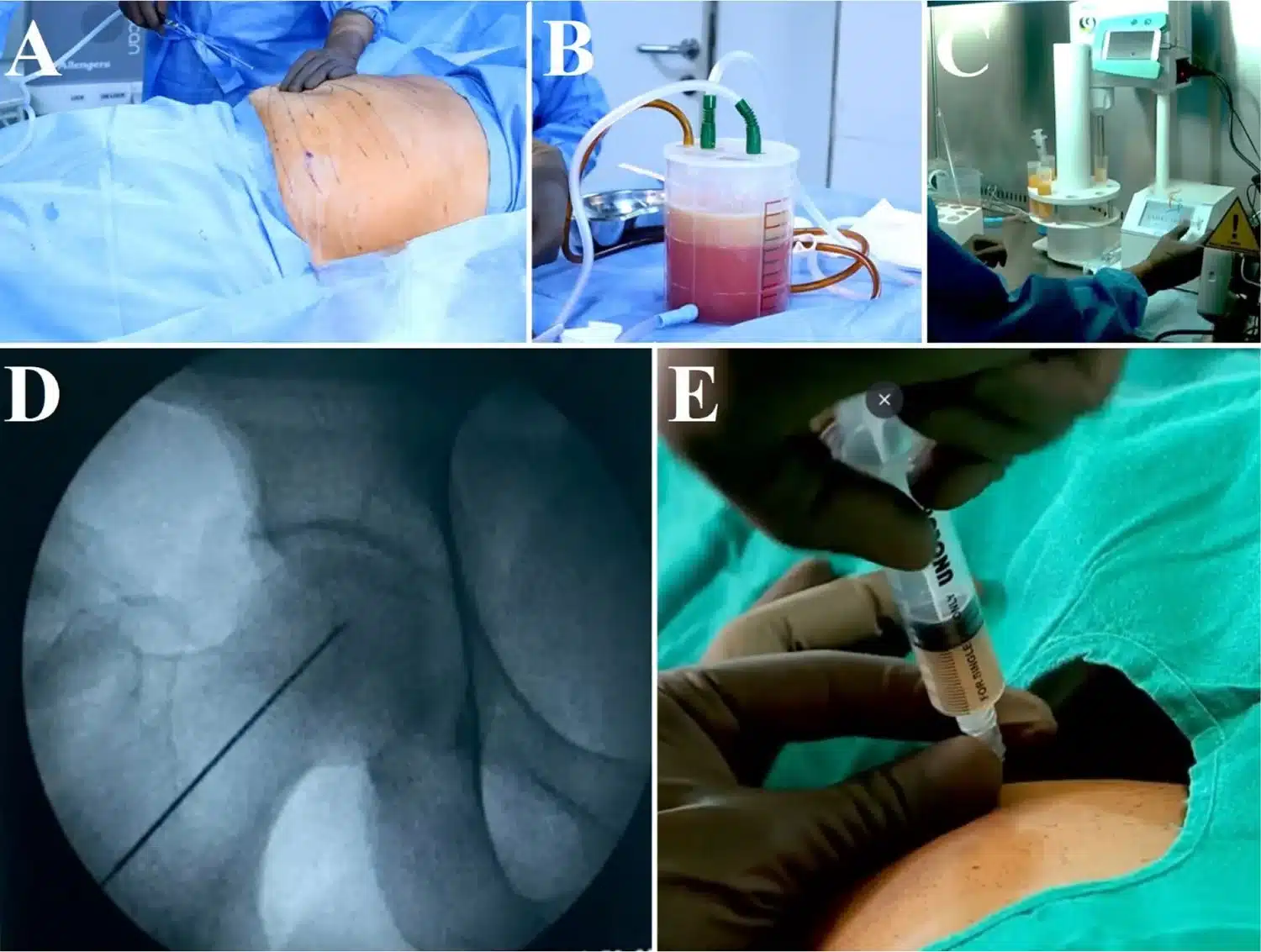SVF Therapy for Hip AVN
Avascular Necrosis (AVN) of the hip, also known as Osteonecrosis of the Femoral Head (ONFH), is a debilitating condition where bone tissue in the hip joint dies due to a lack of blood supply. Over time, this can lead to joint collapse and severe pain, often necessitating a total hip replacement. Young patients are particularly affected, as traditional treatments like hip replacement may not last a lifetime.
To address this, a revolutionary treatment involving Autologous Stromal Vascular Fraction (SVF) derived from the patient’s fat tissue is gaining traction.
What Is SVF, and How Does It Work?
Stromal Vascular Fraction (SVF) is a rich mixture of cells extracted from adipose (fat) tissue which are powerful in regenerating damaged tissues, reducing inflammation, and promoting blood vessel formation. In the treatment of hip AVN, these cells are used to repair bone and restore blood supply to the affected area.

A: The abdomen is marked to identify the area for fat collection (lipoaspiration).
B: Fat is gently collected (lipoaspiration) using a thin tube and stored in a special container.
C: The collected fat is processed using a modern ultrasonic technique to separate the healing cells (SVF).
D, E: The prepared SVF is injected directly into the damaged part of the hip bone in the same session to aid in healing and regeneration.
How Is the SVF Procedure Performed?
The procedure is minimally invasive and completed in a single surgical session, typically lasting about 90 minutes. Here’s how it works:
Fat Extraction (Lipoaspiration):
A small incision is made in the abdomen, and fat tissue is collected using a thin tube under local anesthesia.SVF Isolation:
The collected fat is processed using an advanced ultrasonic technique. This separates the regenerative SVF cells, which are checked for viability.SVF Injection:
The isolated SVF is injected directly into the necrotic part of the femoral head (hip bone) under imaging guidance, allowing precise targeting.
Patients can often resume light activities soon after the procedure, with full recovery and weight-bearing activities allowed within weeks.
Benefits of SVF Therapy
- Bone Regeneration:
The MSCs in SVF differentiate into bone-forming cells and stimulate new blood vessel growth, reversing the damage caused by AVN. - Minimally Invasive:
Unlike major surgeries, SVF therapy involves minimal cuts, lower risks, and faster recovery. - Natural Healing:
Since the cells are sourced from the patient’s own body, there’s no risk of rejection or significant side effects. - Long-Term Results:
A six-year follow-up study showed significant improvement in patients’ hip function, as measured by their Hip Disability and Osteoarthritis Outcome Score (HOOS). None of the participants experienced adverse effects, and many avoided the need for total hip replacement.

Why Choose SVF Therapy for Hip AVN?
India is seeing an increasing number of younger individuals affected by AVN, particularly due to factors like trauma, lifestyle, and genetic predisposition. Traditional options like hip replacement are not ideal for this demographic due to the limited lifespan of artificial hip joints.
SVF therapy, by regenerating the bone and restoring the joint’s natural function, offers a durable, effective alternative.
If you or a loved one is dealing with hip AVN, consult an expert at HipXpert to explore whether SVF therapy is the right choice.
